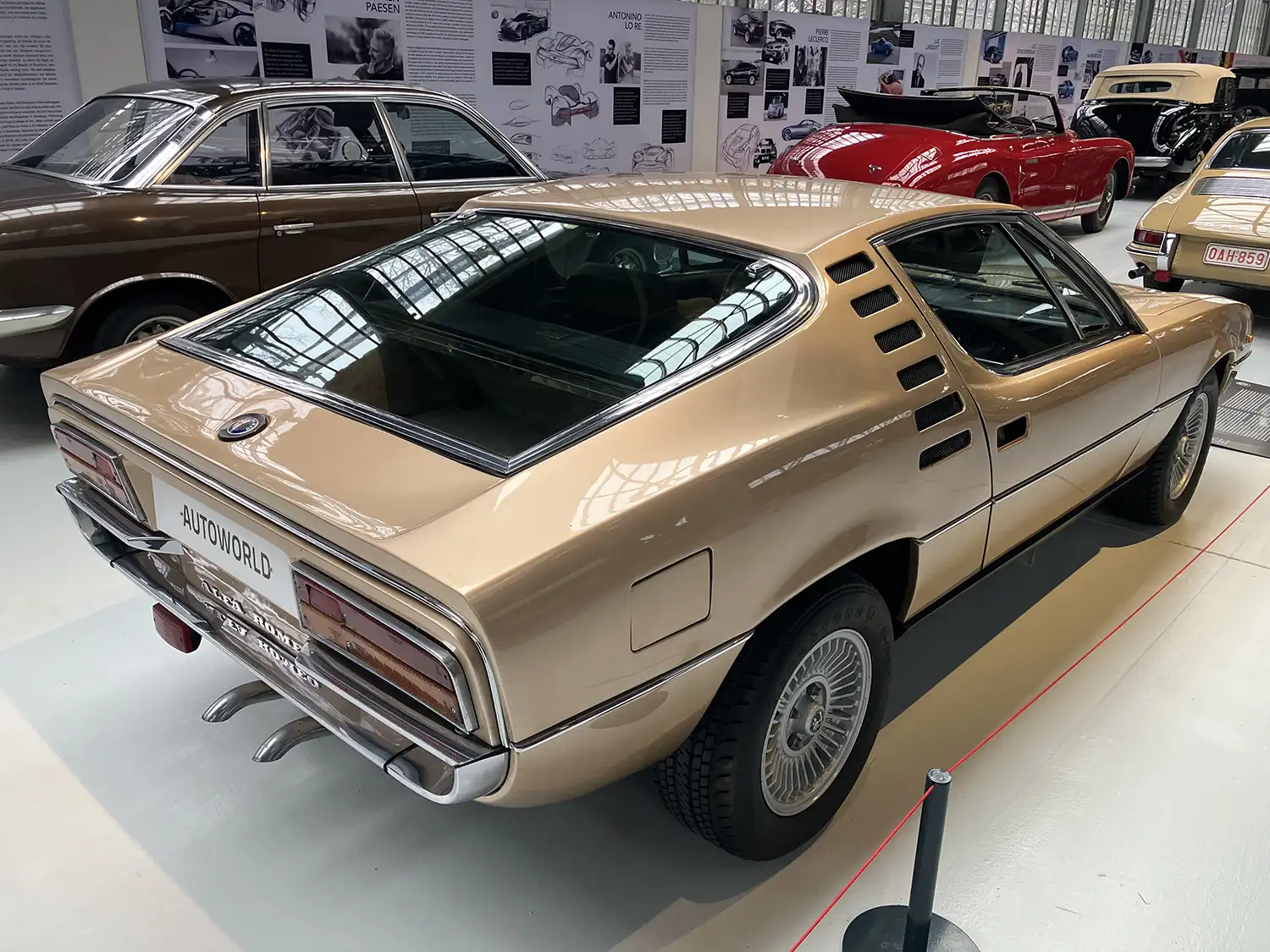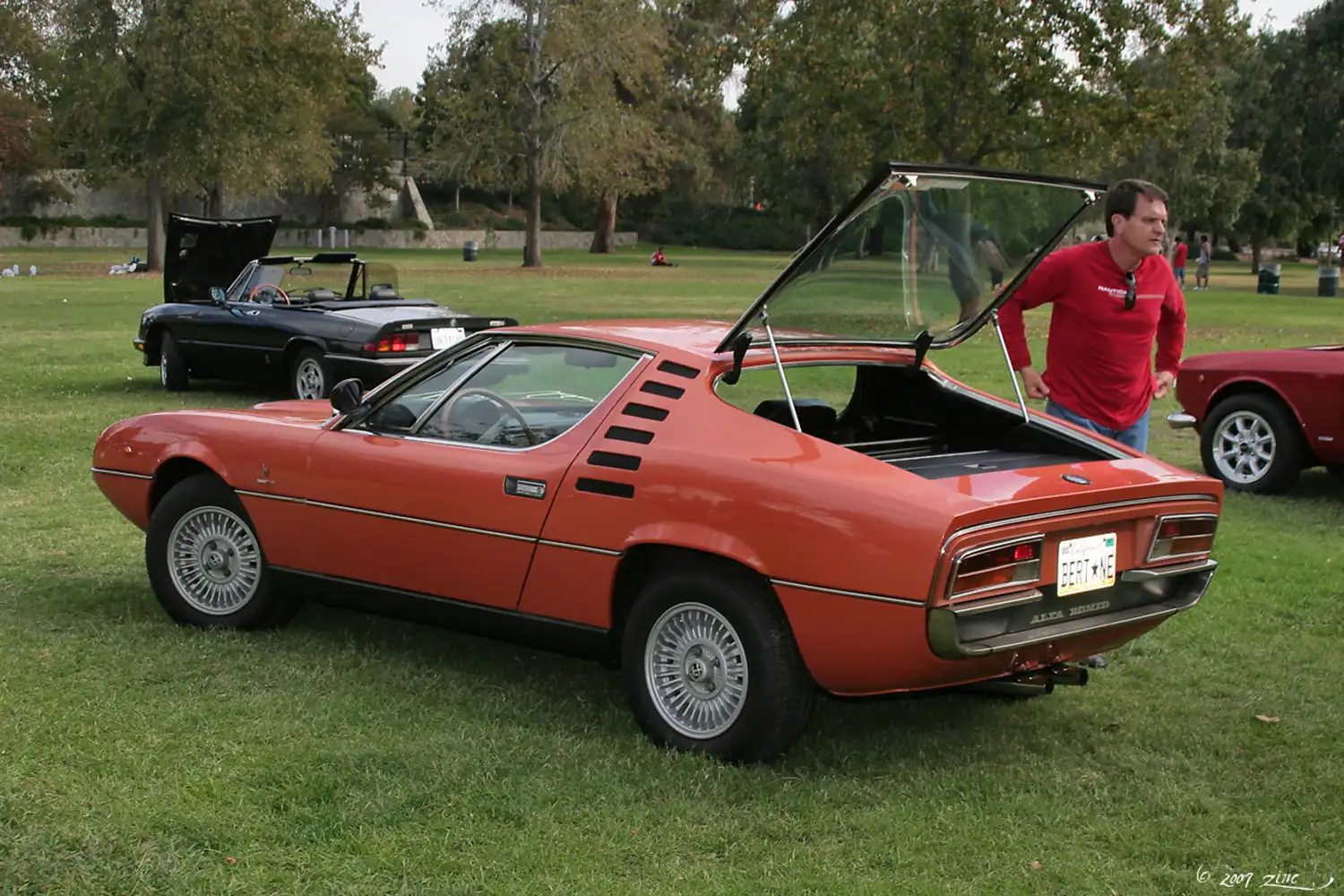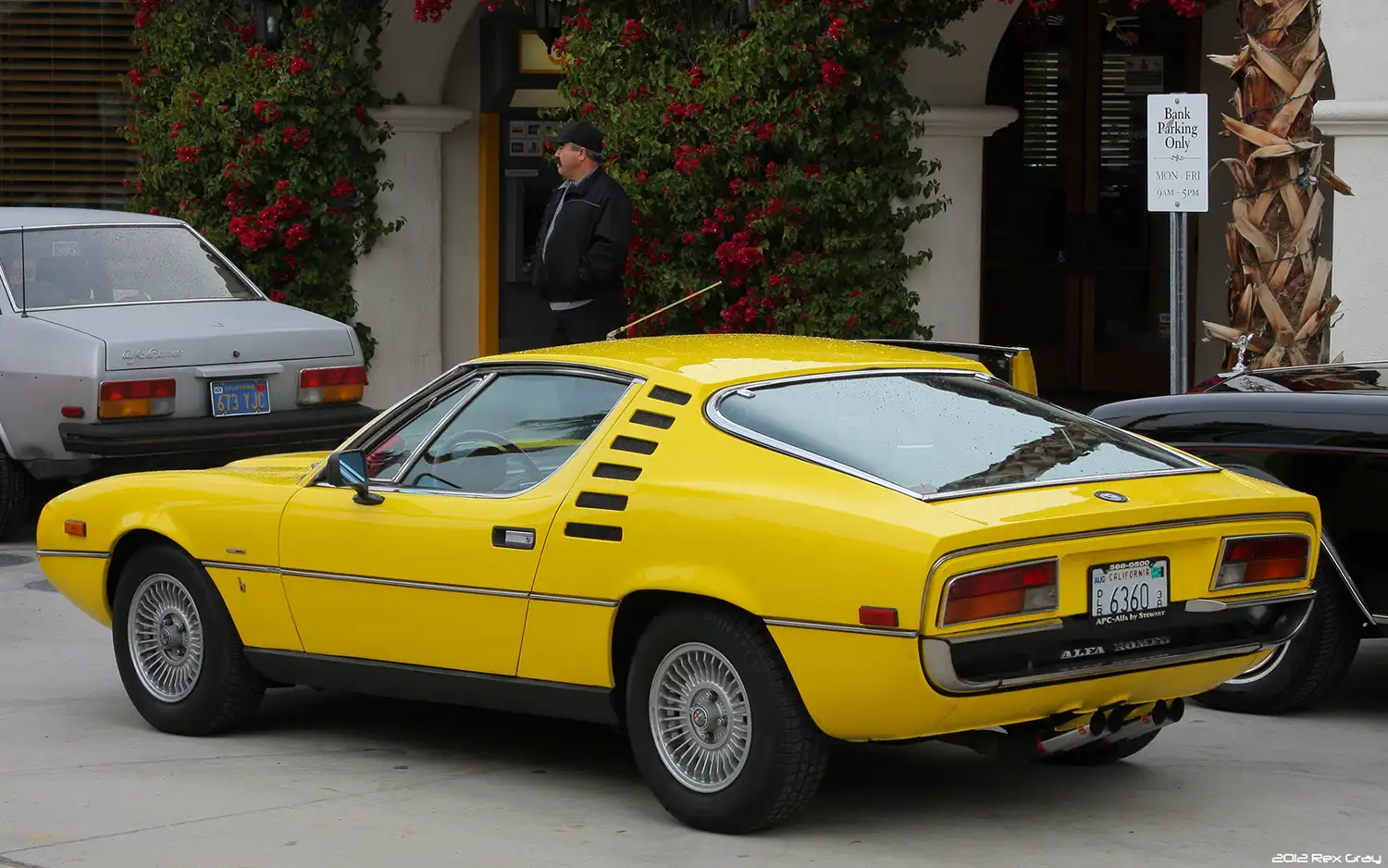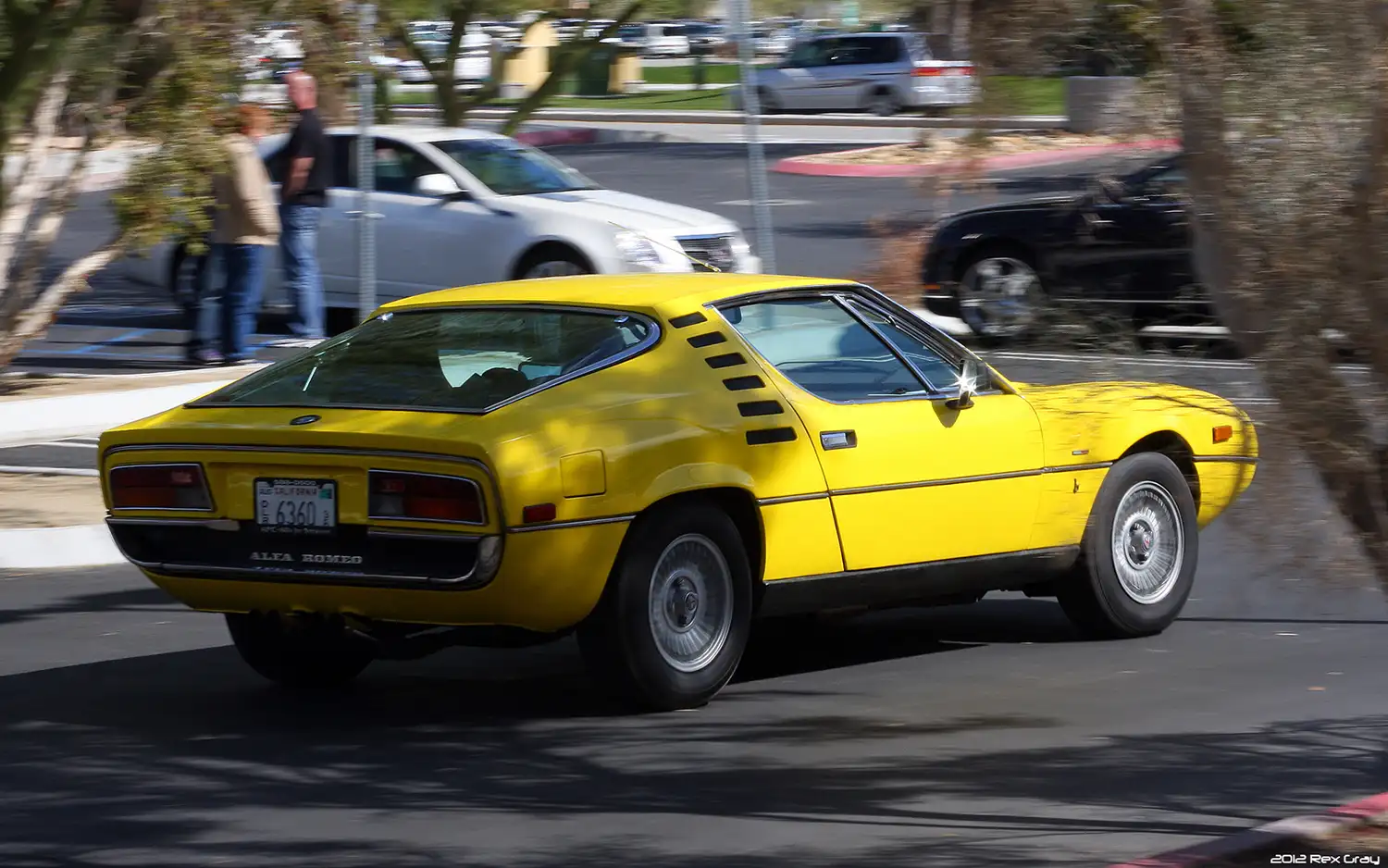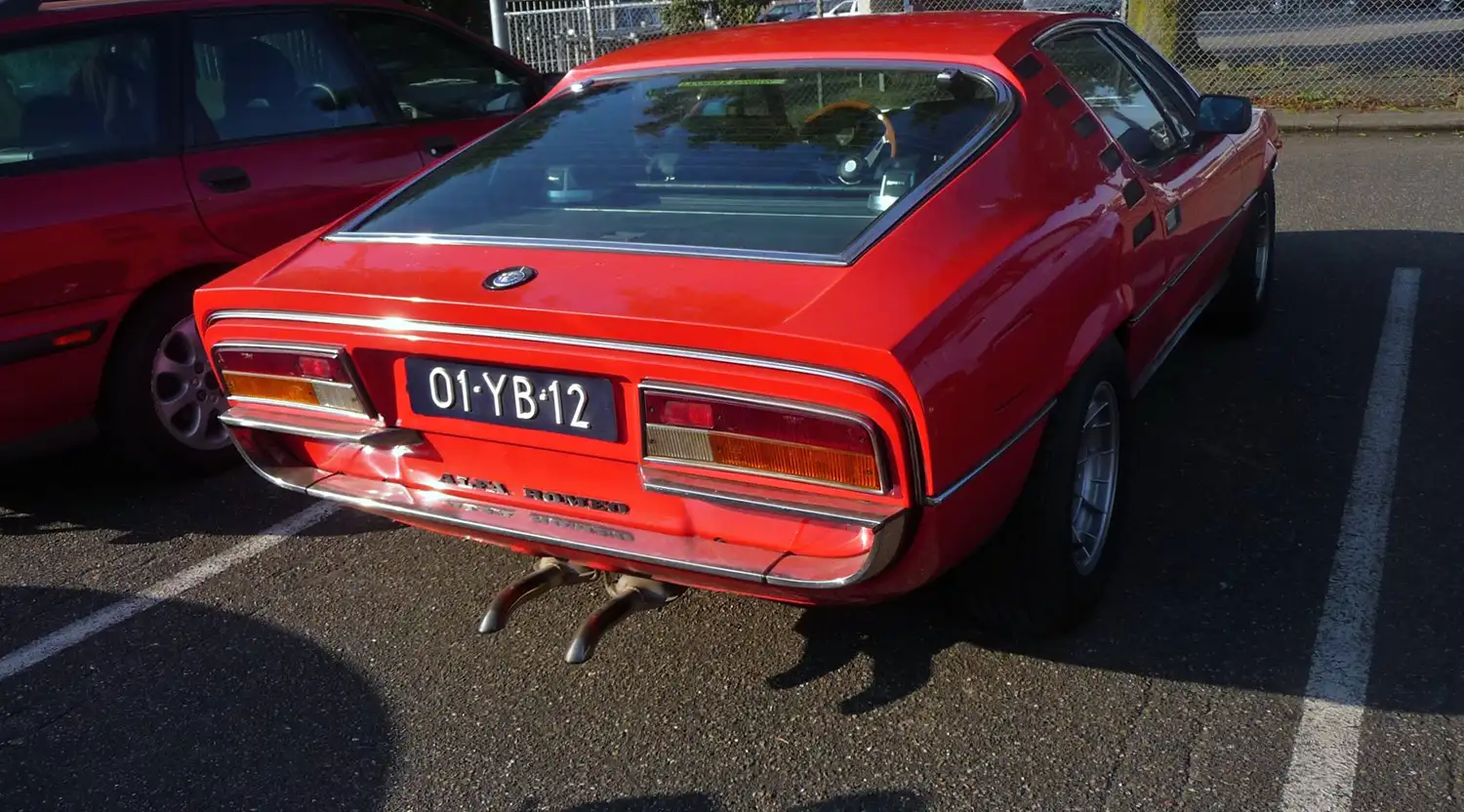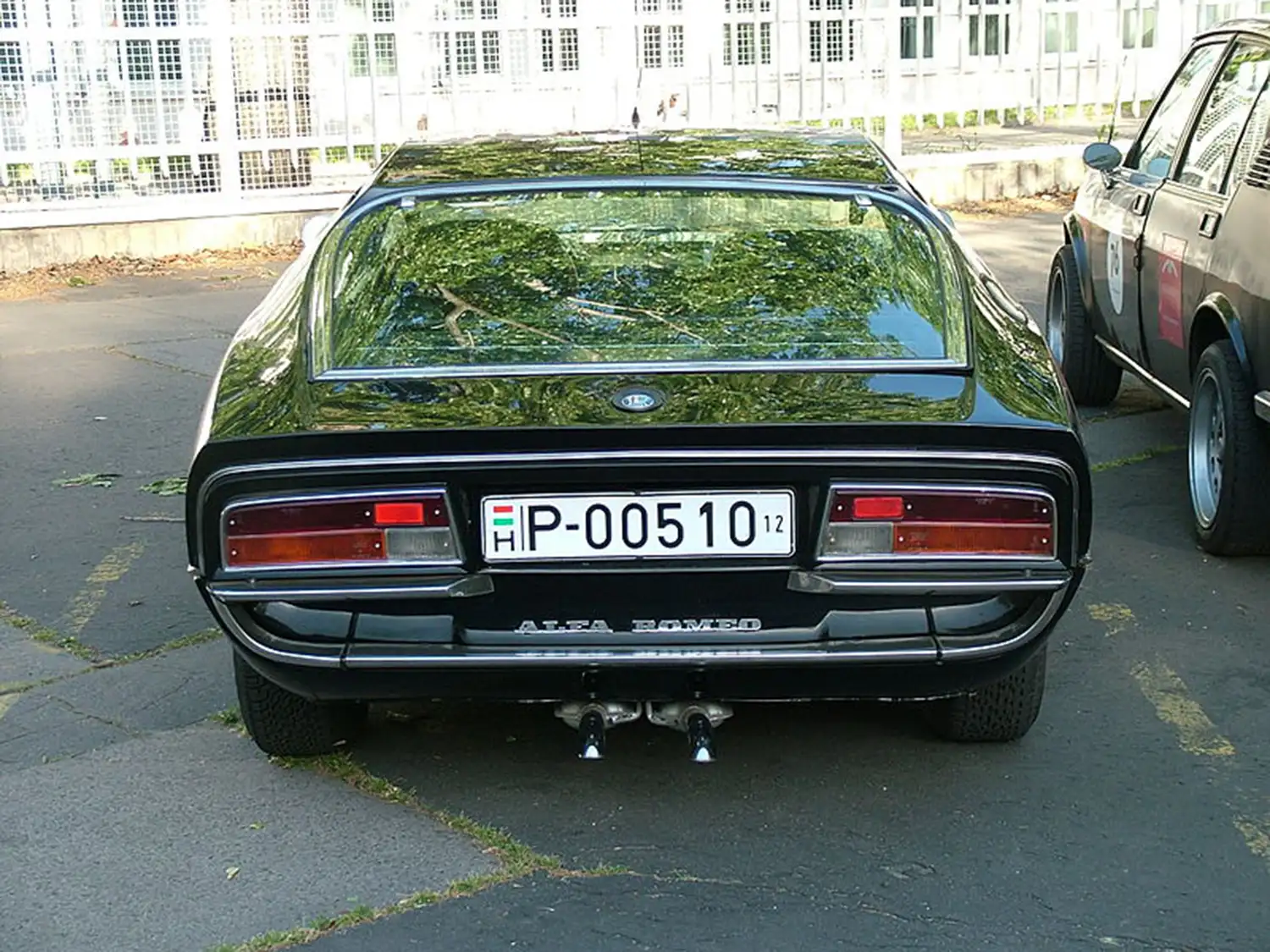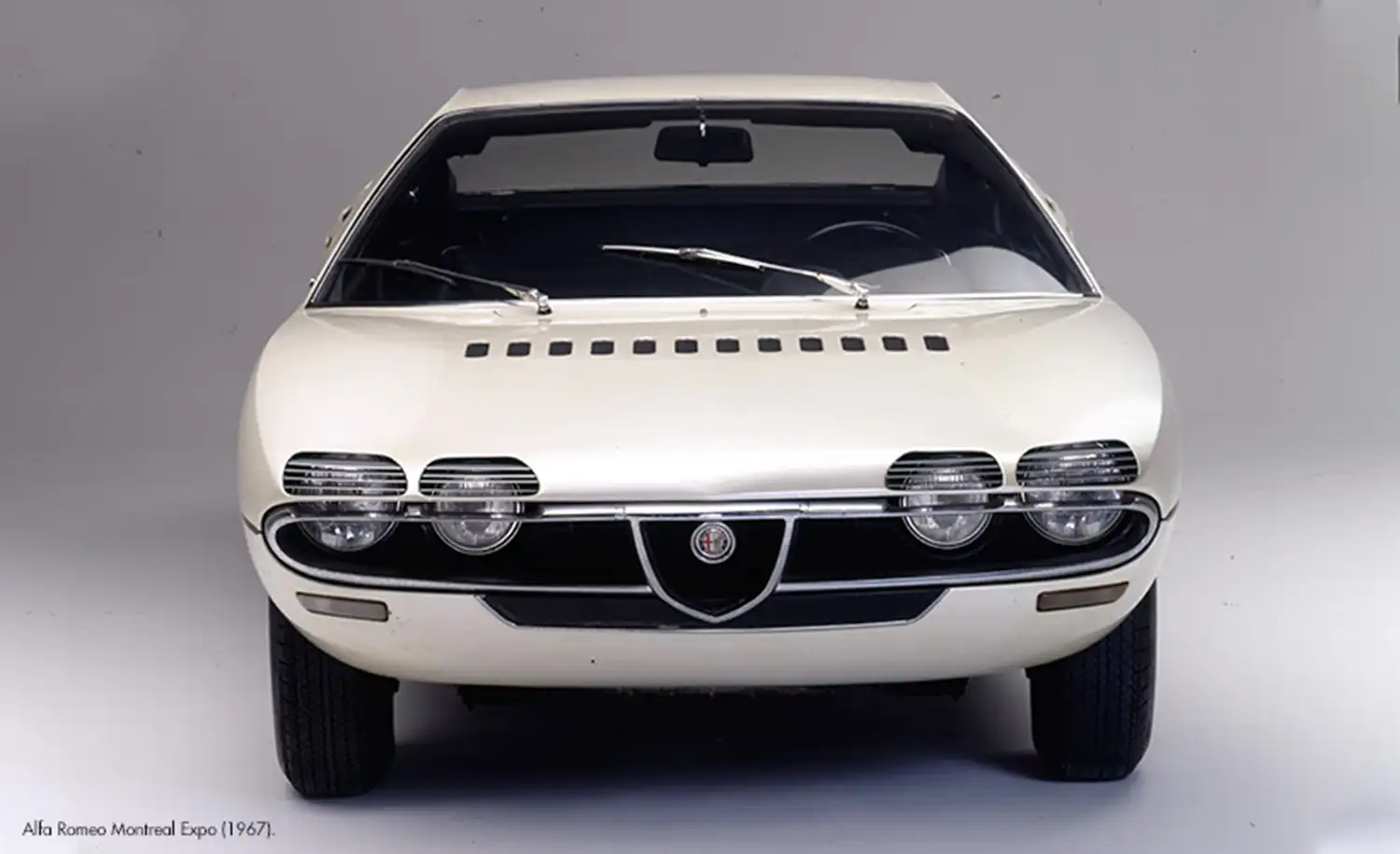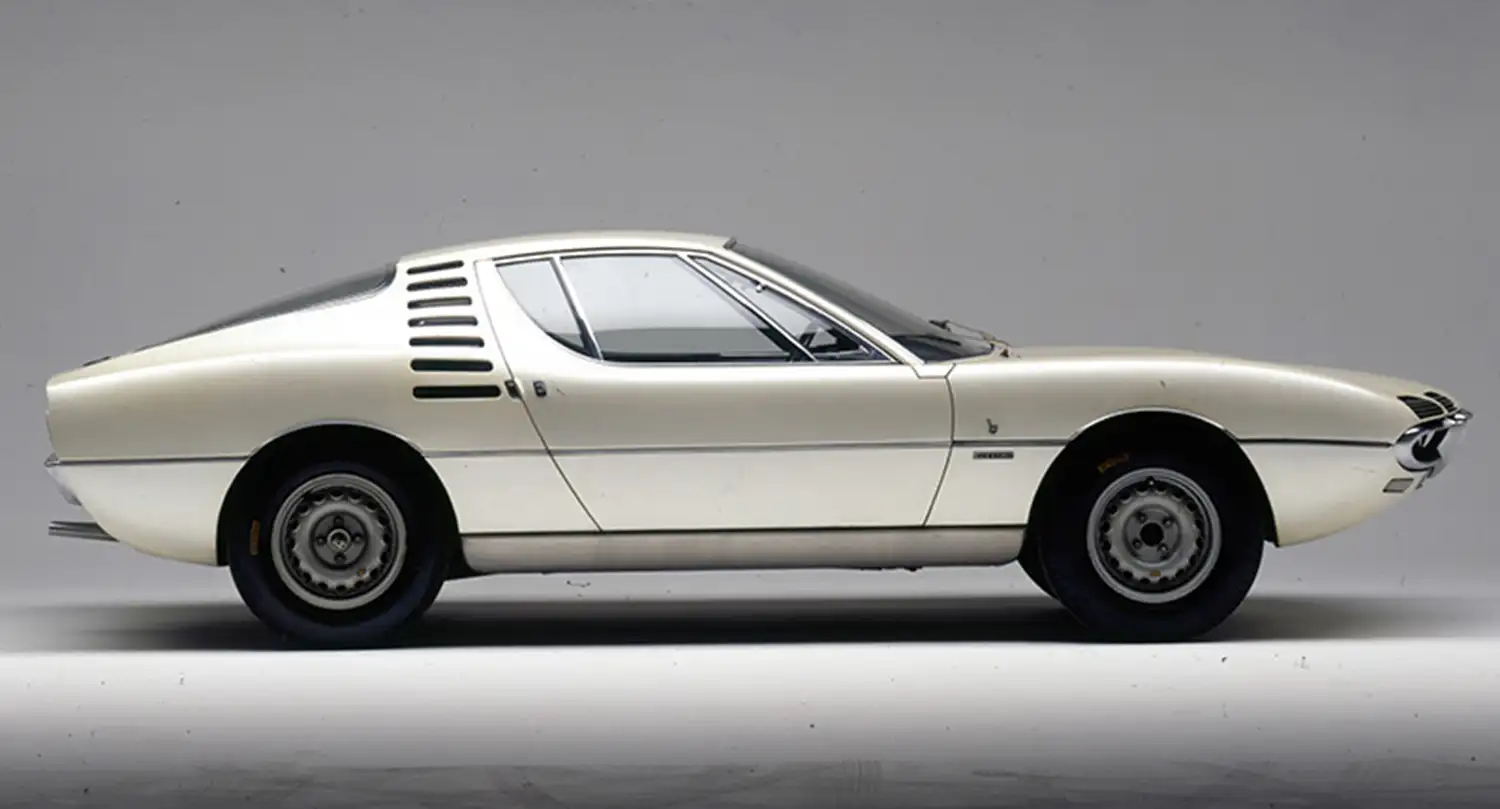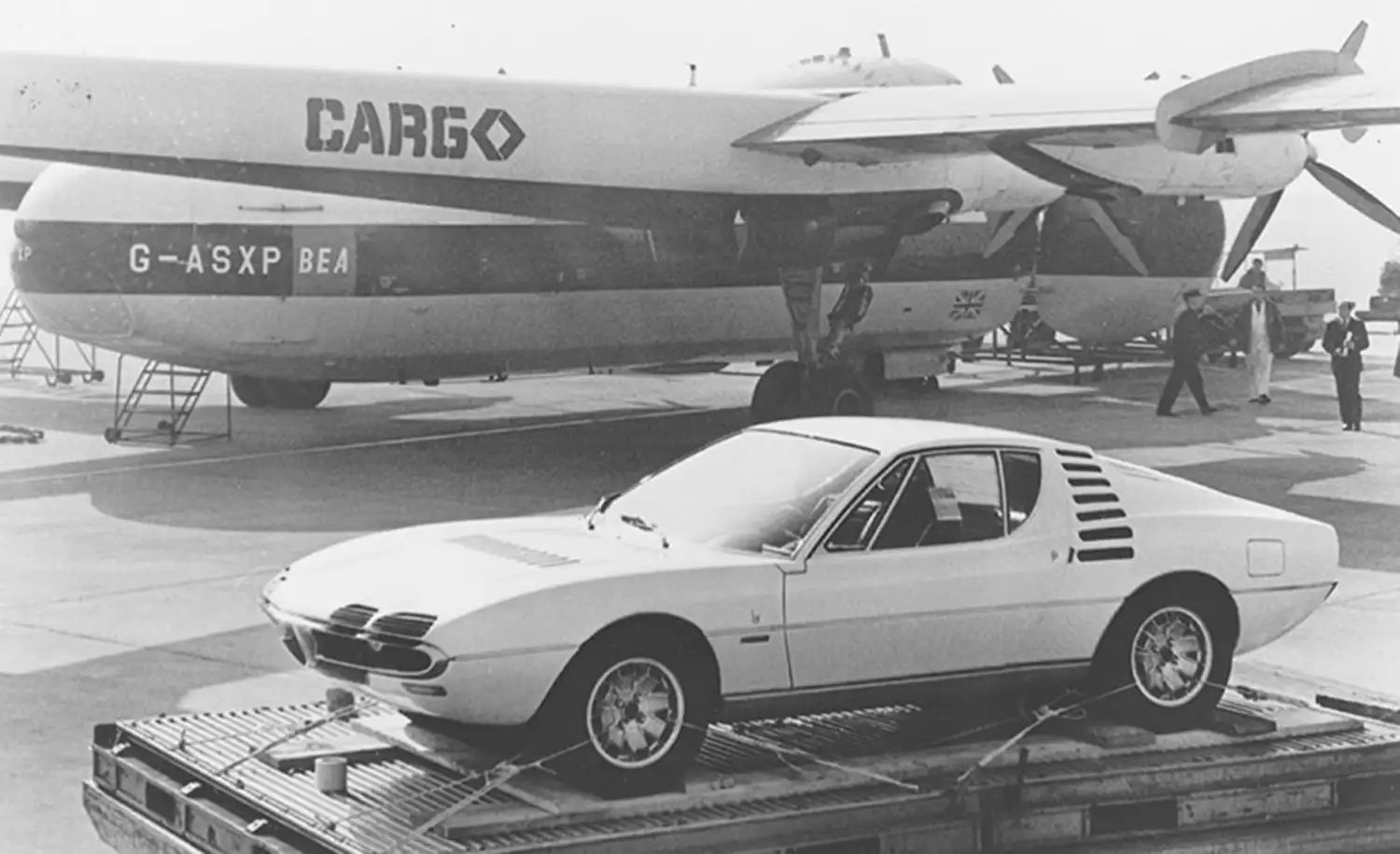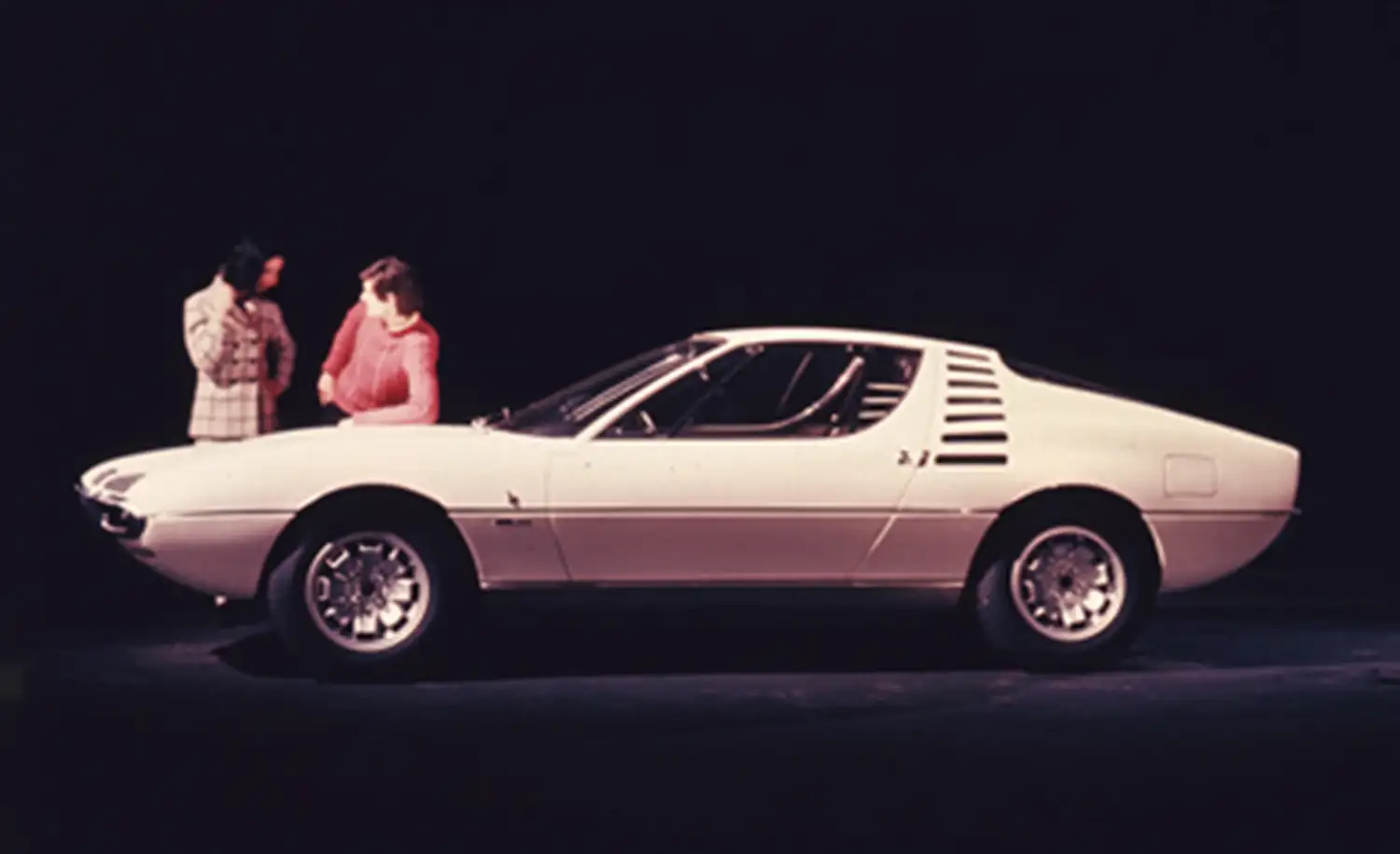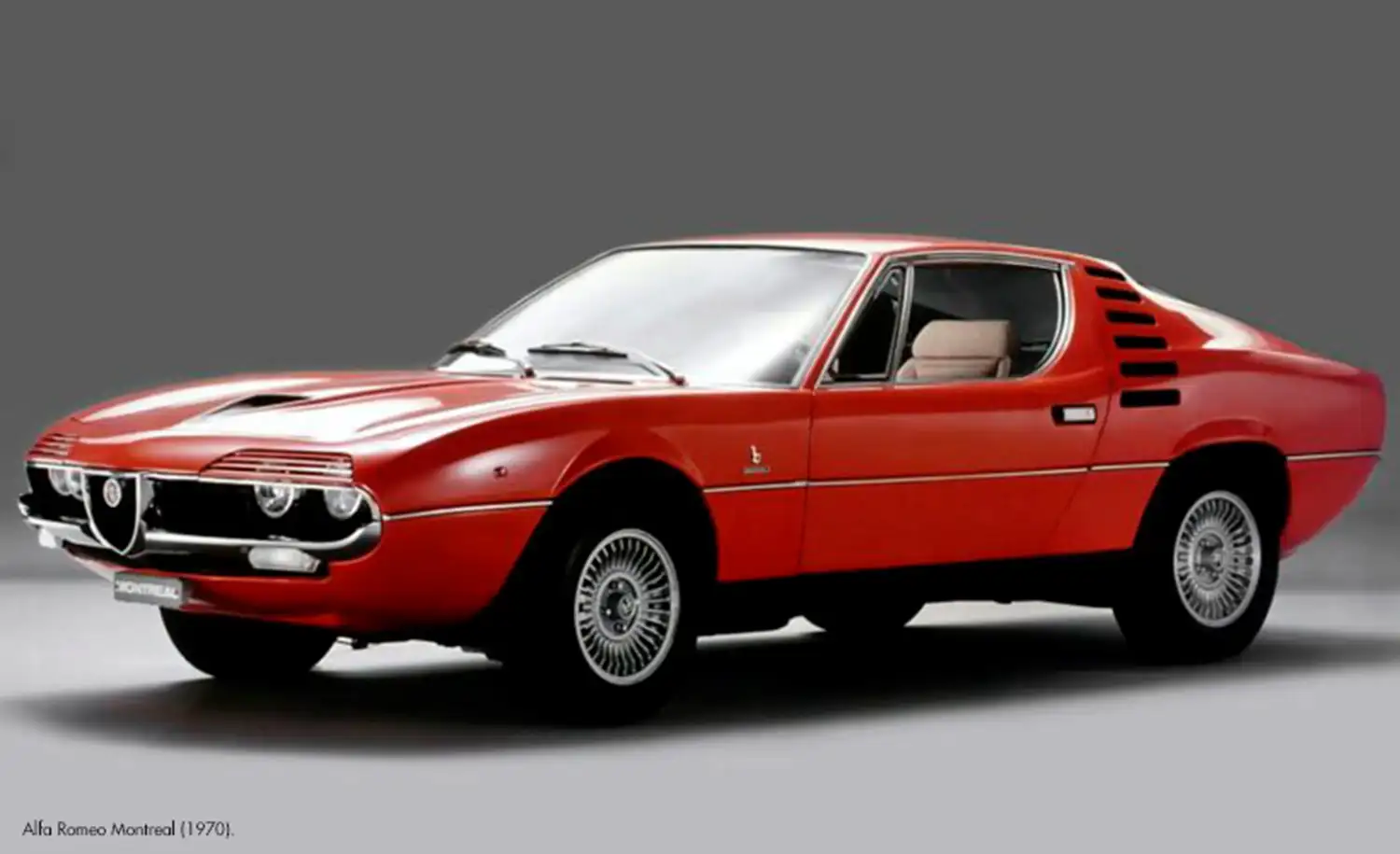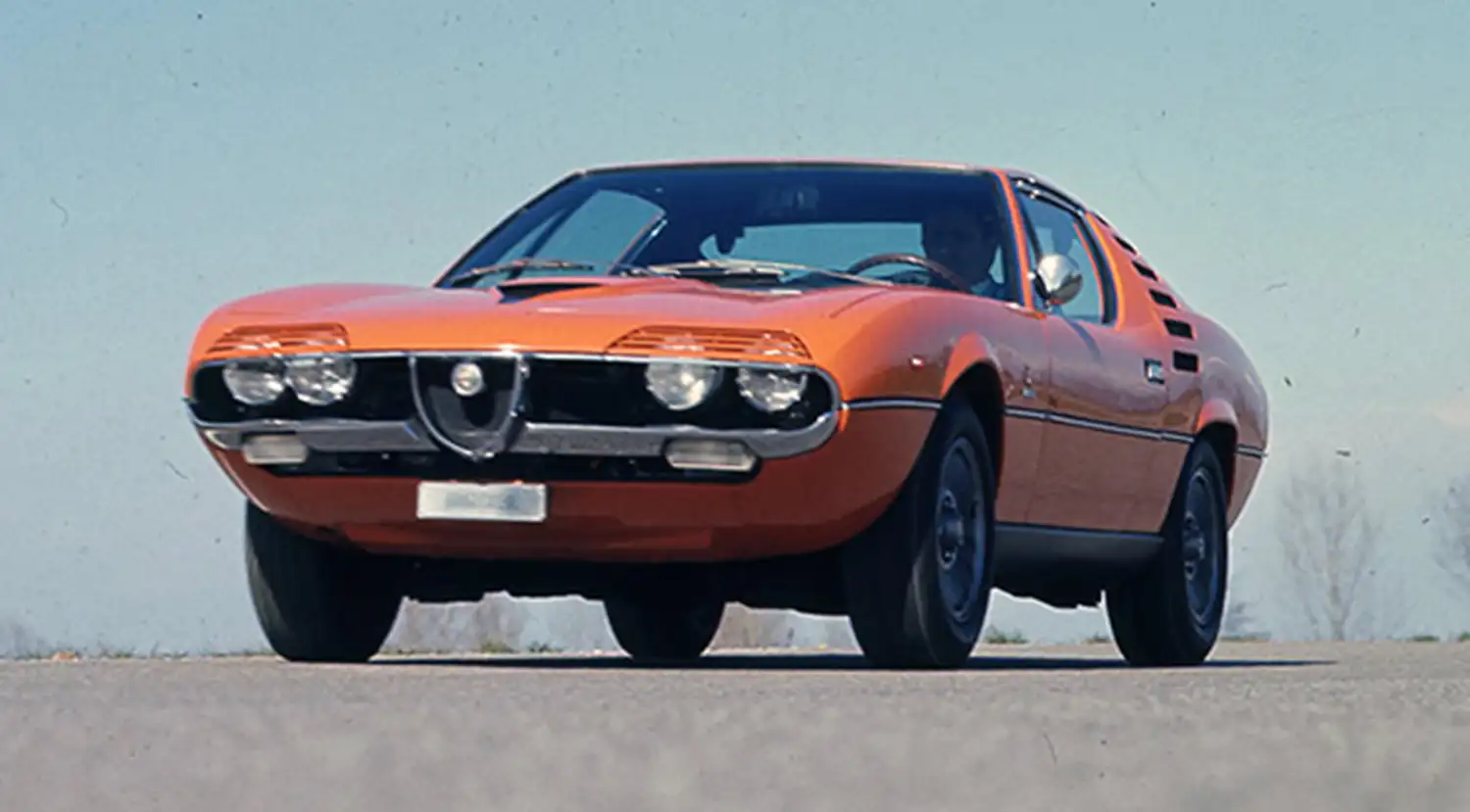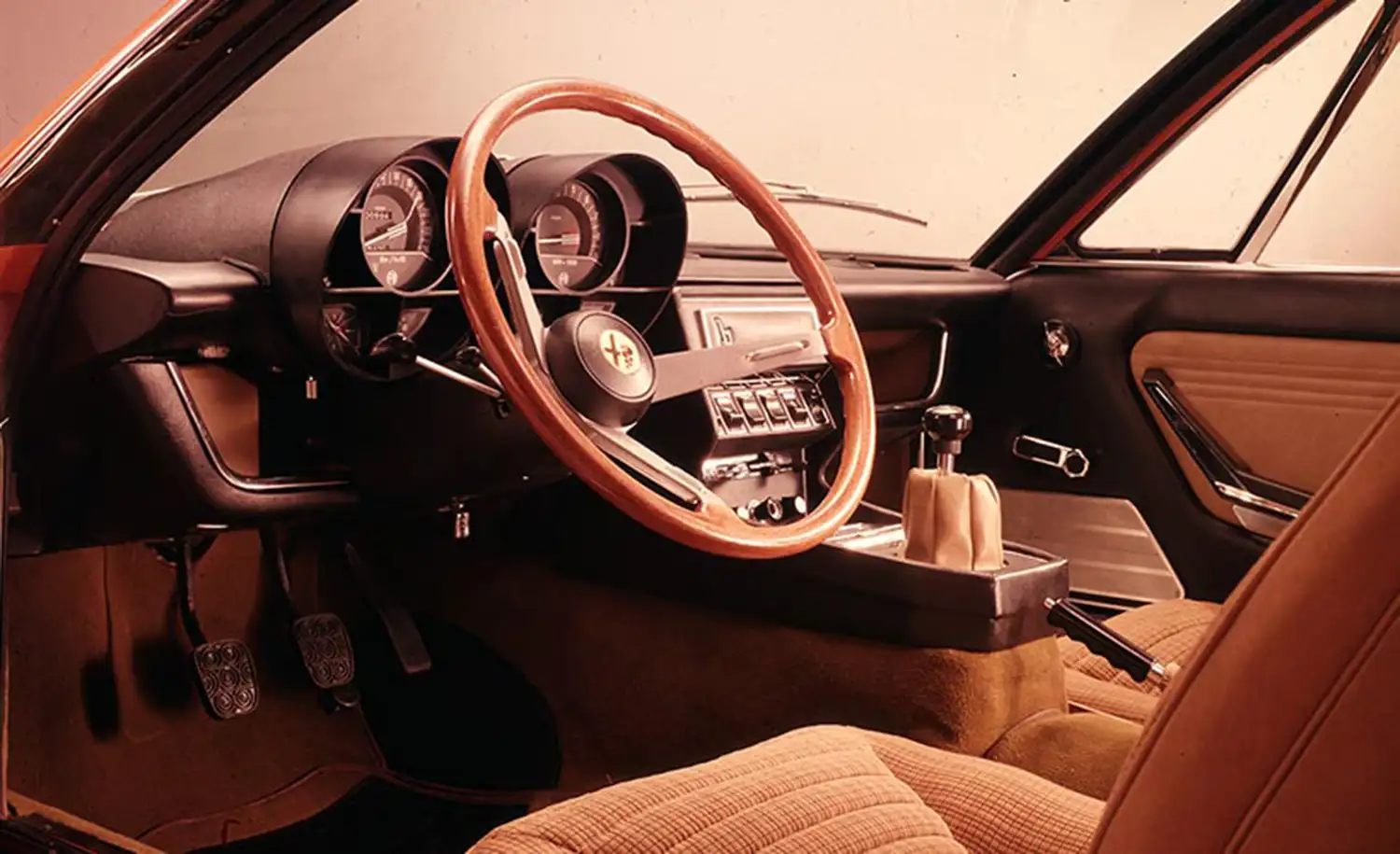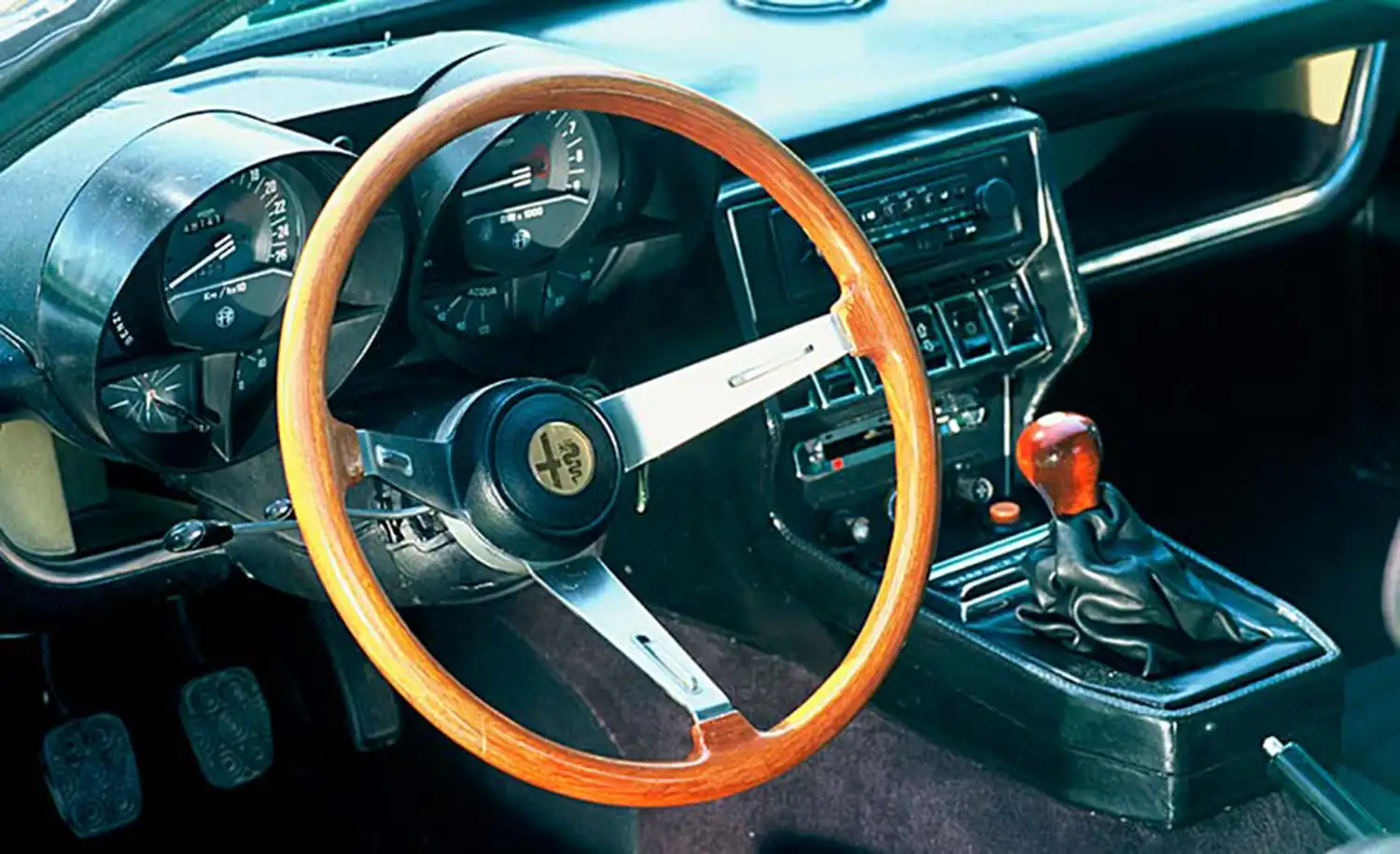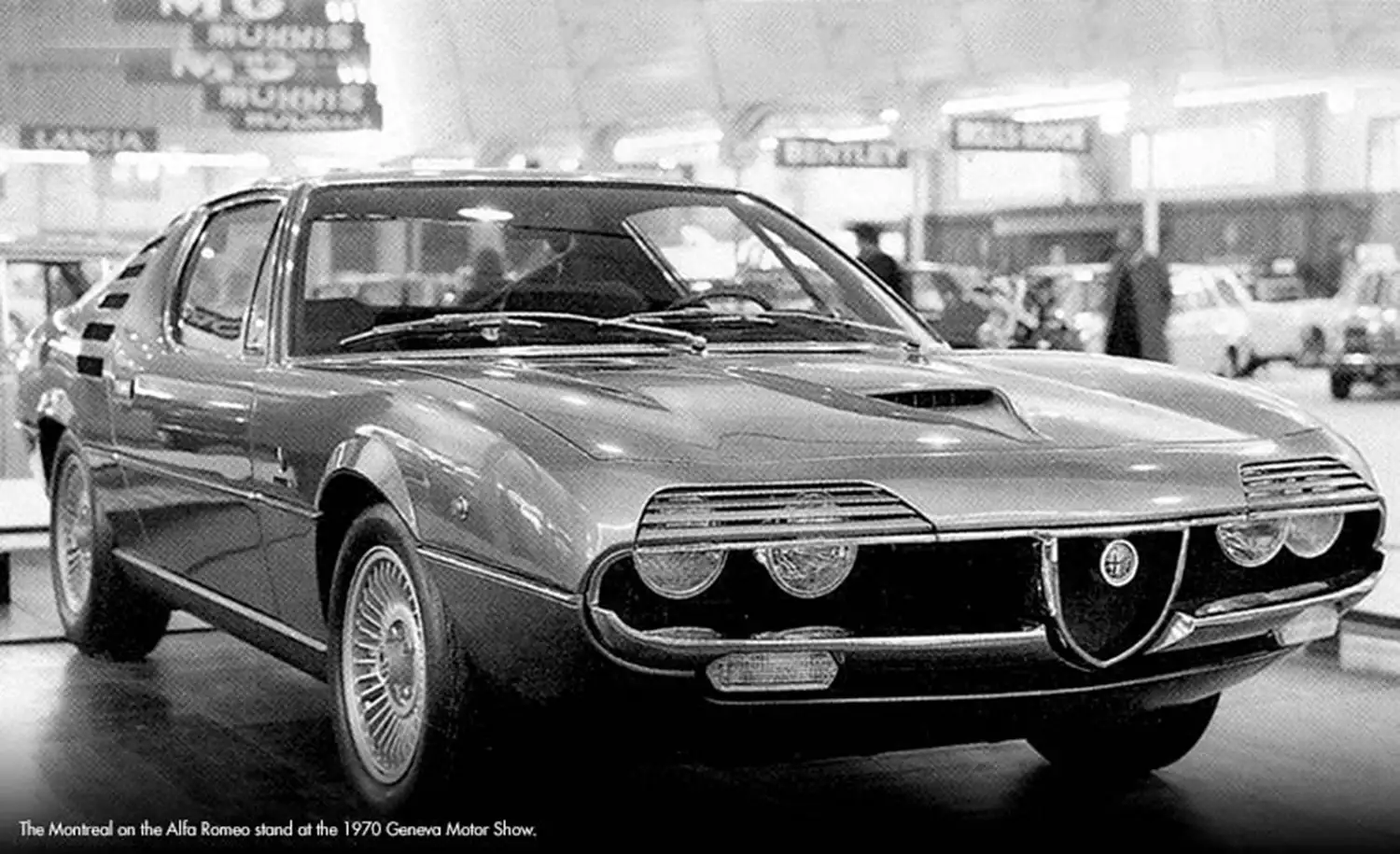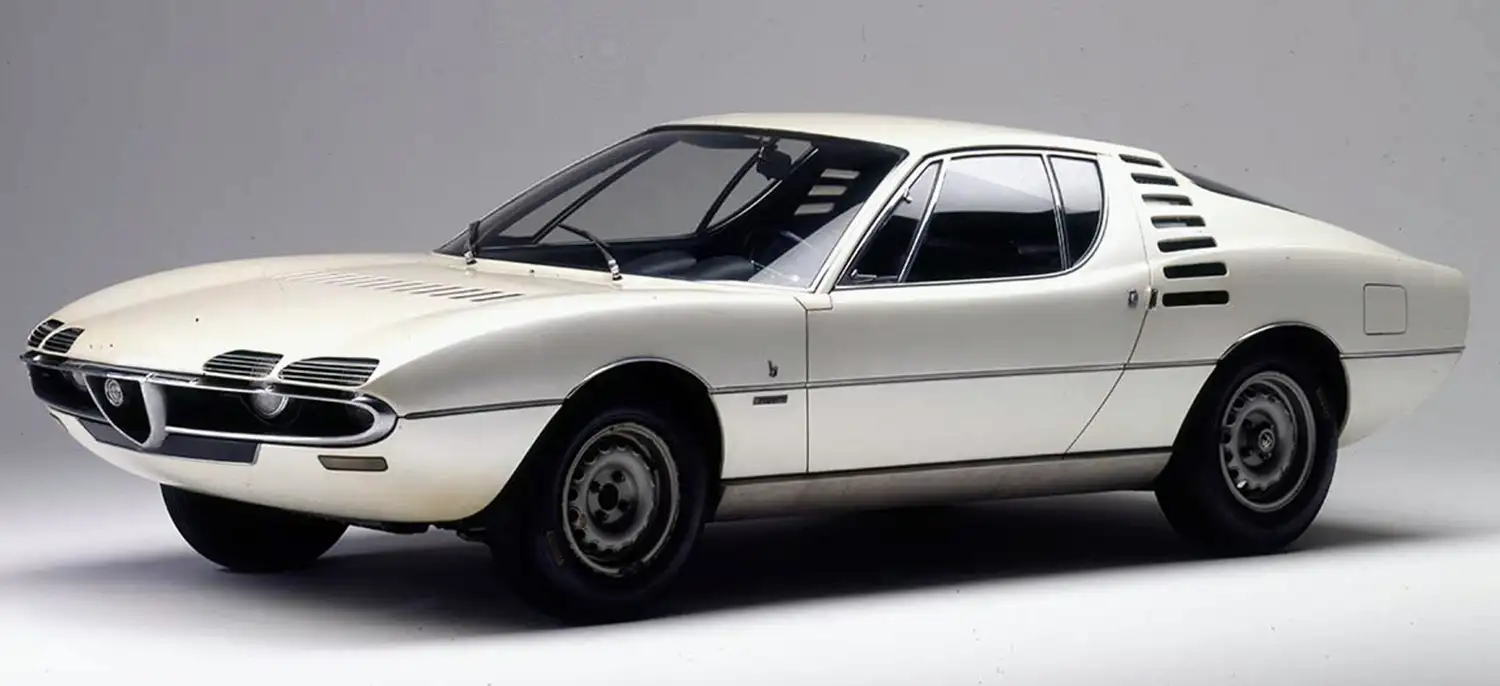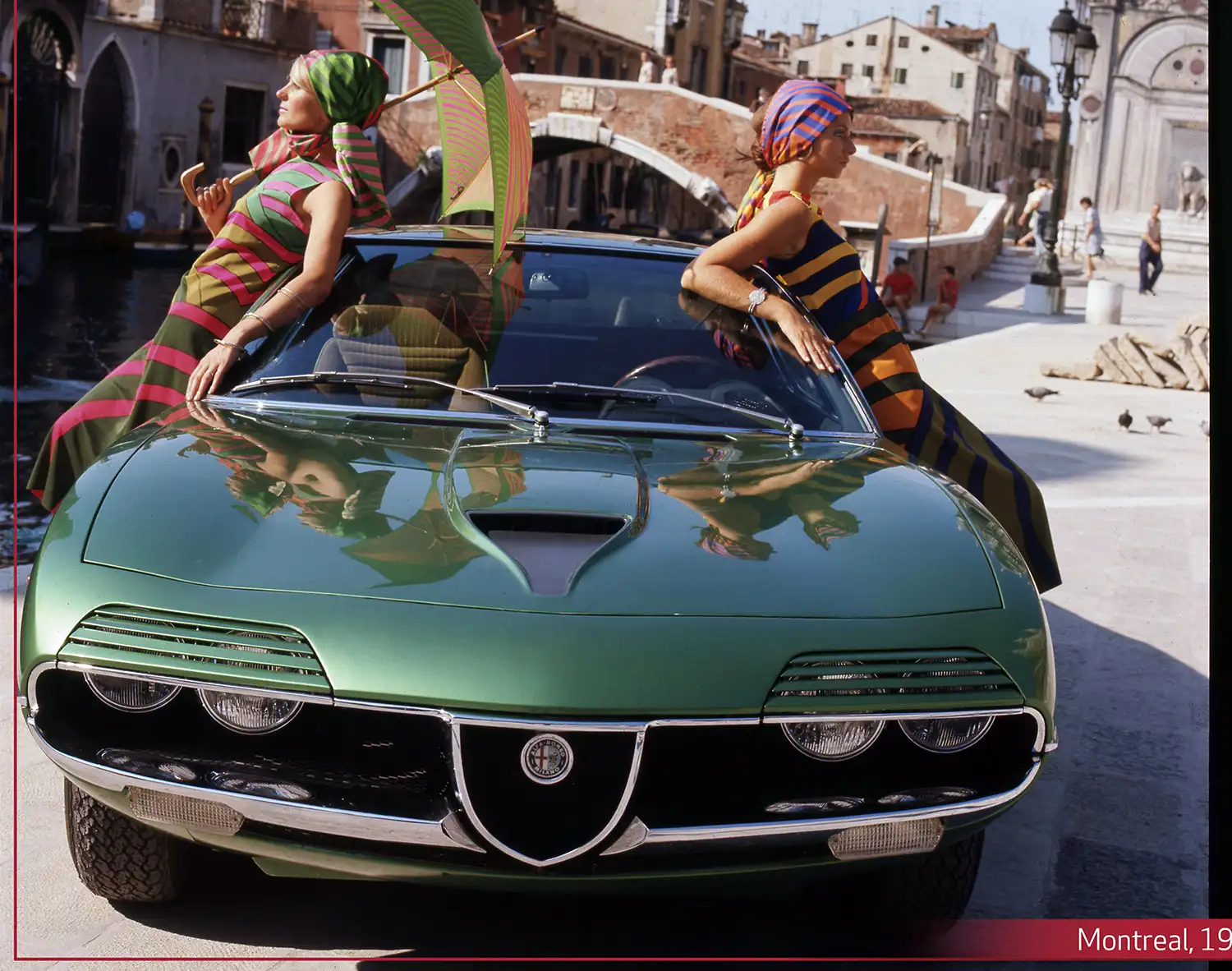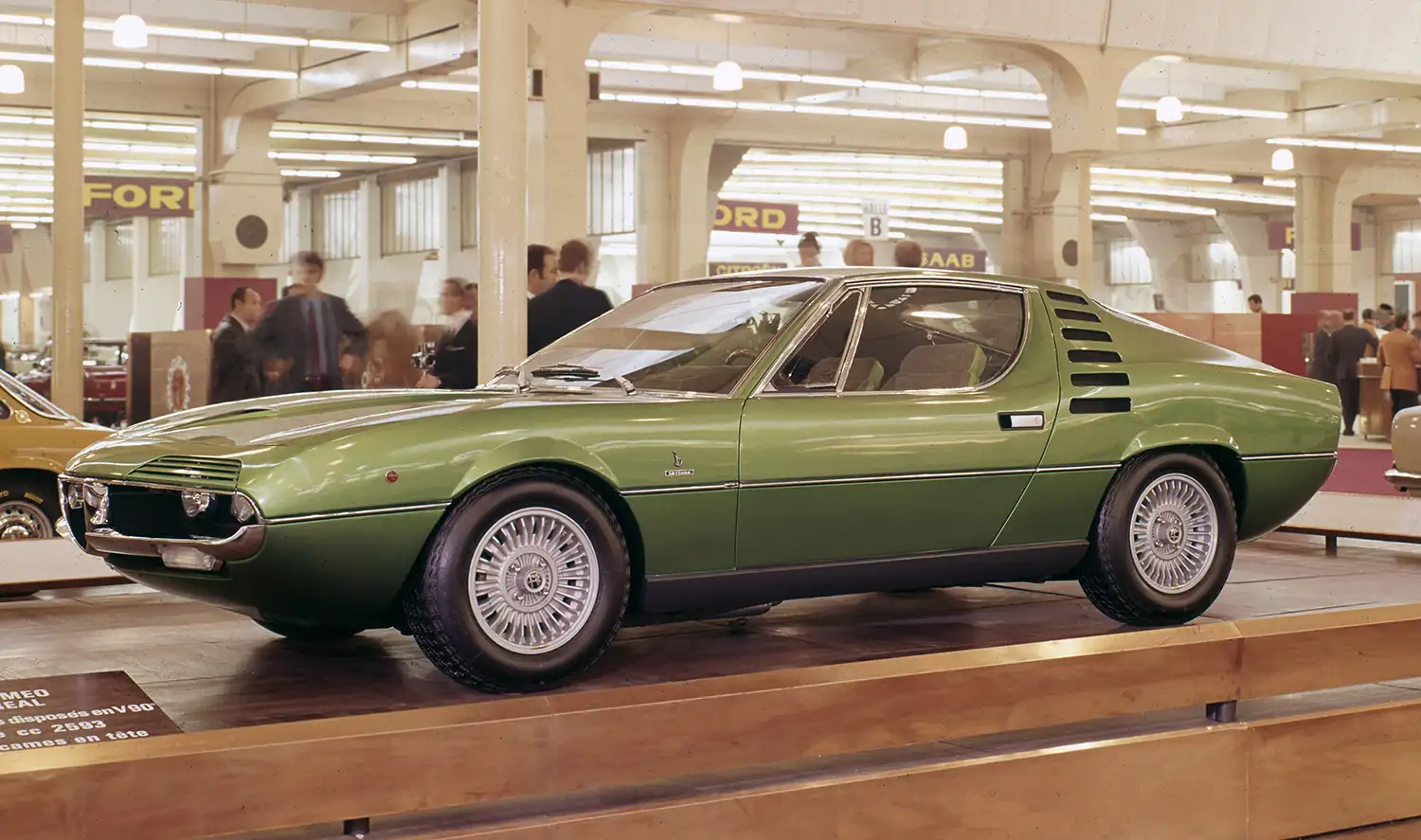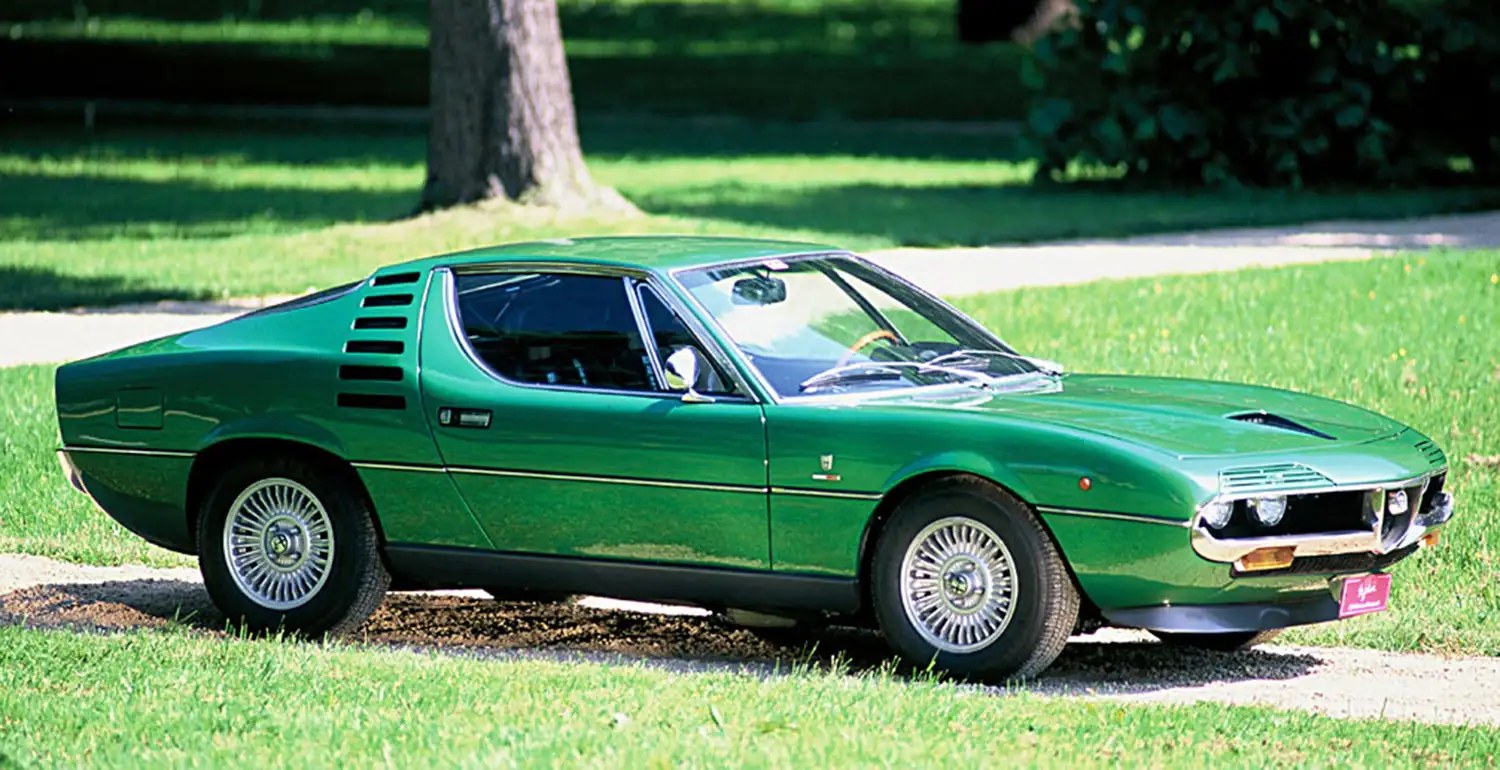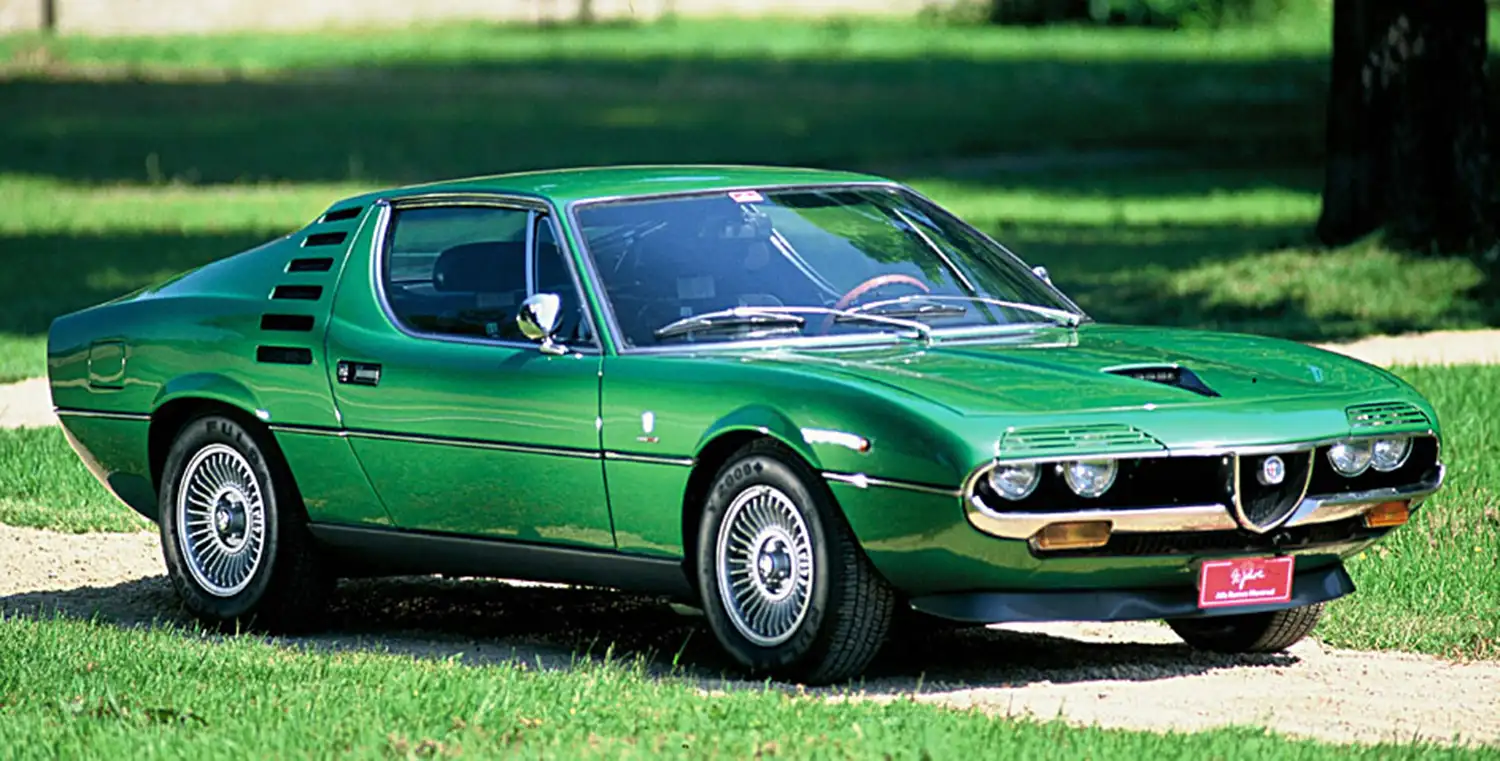
For the 1967 Universal Exposition in Montreal, Alfa Romeo was selected from among all international manufacturers to present a car that represented the “highest aspiration of modern man in terms of cars”.
Mike Nichols’ film “The Graduate”, which was released in 1967, celebrated the Spider Duetto as one of the most desirable cars in the United States and worldwide, because it encapsulated the spirit of freedom that pervaded those years. It was a golden age for Alfa Romeo, which became a global icon of cool. The Milanese automaker’s popularity did not escape the organisers of EXPO 1967, the theme of which was “Man and His World”. Alfa was asked to build a car that represented the ultimate incarnation of motoring at the time.
However, the Universal Exposition was only nine months away and the company’s elation at being selected for this honour was tempered by the pressure of having to create an exceptional car in record time. Producing a car completely from scratch was out of the question, so the Giulia Sprint GT was chosen as a base and Carrozzeria Bertone was commissioned to style the bodywork.
In Bertone’s workshop, 29-year-old Marcello Gandini designed an elegant, low and streamlined coupé. The originality of the design owed much to the low radiator grille and plunging bonnet that half-concealed the headlights behind distinctive louvred eyelids, a novel and innovative solution that improved the car’s aerodynamic profile. The car’s sloping windscreen, two long L-shaped doors and six air vents on each C-pillar were also among the many stylistic features that would become iconic of this model. Other distinguishing touches included the almost horizontal glass tailgate, the Kamm tail-cum-spoiler and the double twin tailpipe in the centre. Two identical specimens were made, both painted in pearl white.
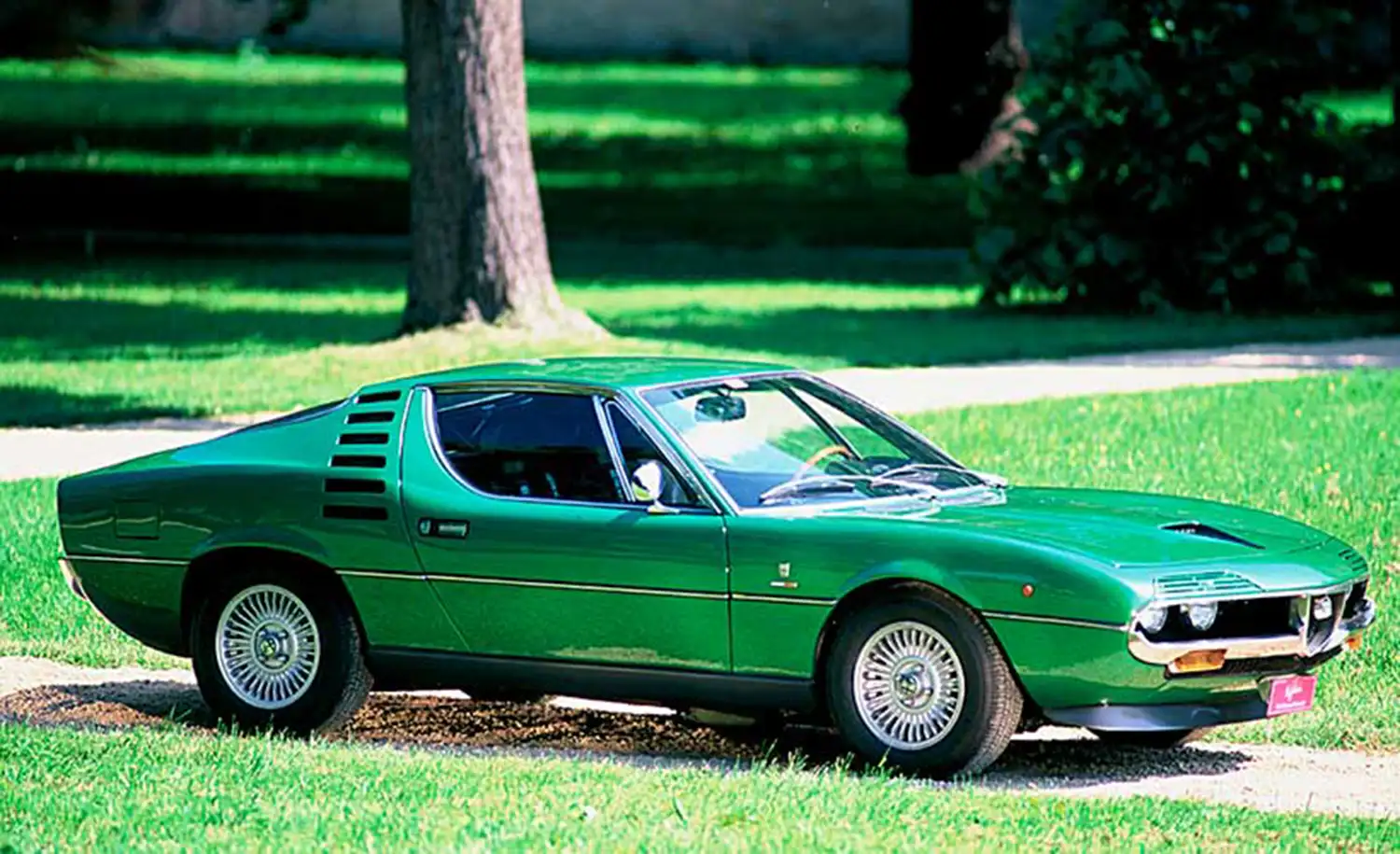
The two concept cars – which are now called the Alfa Romeo Montreal Expo – were exhibited at the entrance to the Universal Exposition, in the pavilion entitled “Man the Producer”. By means of a peculiar effect using mirrors, the image of the two prototypes was infinitely repeated throughout the exhibition space. Both cars are now part of the FCA Heritage collection and are kept in the Alfa Romeo History Museum.
- ALFA ROMEO MONTREAL EXPO 1967
ENGINE: 4 cylinder in line Otto cycle, DOHC, double carb., double body, anterior longitudinal 1.570 cm³ - POWER: 90 HP @ 6.000 rpm
- SPEED:n.d.
- WEIGHT:n.d.
- DESIGN:Bertone (by Marcello Gandini)
- TYPE OF BODY:Coupé
The extraordinary success of the two concept cars at the 1967 Expo convinced the Alfa Romeo management to create a coupé very similar to the Bertone prototype, but with upgraded mechanicals including a powerful V8 engine from the 33 Stradale.
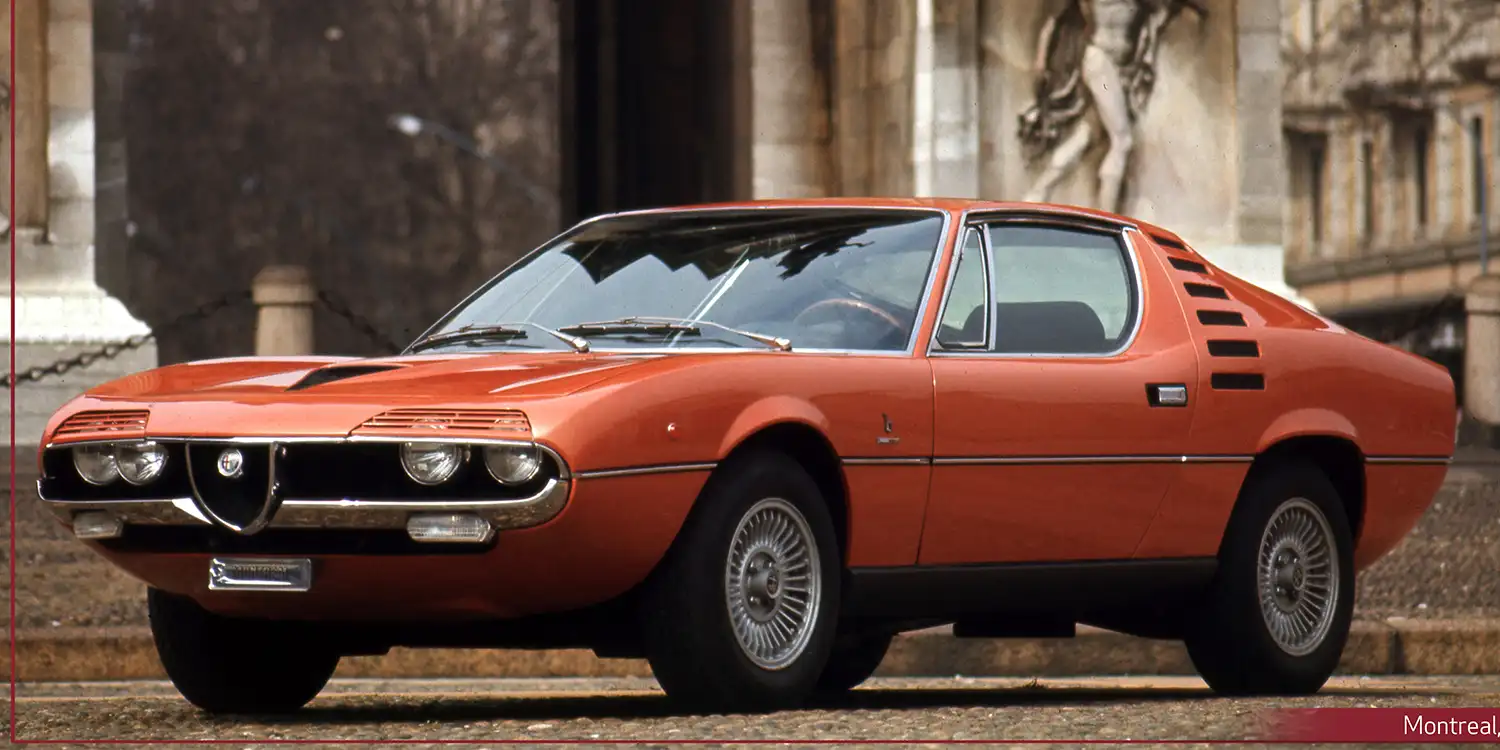
Marcello Gandini further flexed his design talent by converting the EXPO ’67 prototype into a mass-produced touring berlinetta. The bonnet was raised to accommodate the V8 engine from the 33 Stradale, the displacement was increased to 2.6 litres and power output was decreased from 130 HP to around 77 HP/litre to make the car more docile and suitable for road use. The exterior styling was also tweaked and the mass-produced Montreal rode slightly higher than the two prototypes displayed in Canada, although the headlight blinds were retained. The varied range of available colours accentuated the vehicle’s personality and catered to contemporary tastes, almost in contrast with the “lunar” pearl white finish chosen for the two concept cars. The most eye-catching colours were metallic gold, Verde Termico green, Marrone Luci Di Bosco brown beige and iconic lobster orange, as seen on the specimen exhibited at the Alfa Romeo Museum in Arese.
The Montreal was presented at the Geneva International Motor Show in March 1970, but only became available to order two years later. The price was set at 5,700,000 lira.
Between 1970 and 1977 a total of 3925 cars were produced. This limited number was due to the decline in popularity of sports cars caused by the oil crisis of the 1970s. Even today it remains a crowd-pleaser due to its shapely figure and elegance, traits it shared with Hollywood divas during its heyday. And Hollywood doesn’t seem to have forgotten the Montreal: in 2017 a magnificent rare specimen in black made a standout cameo appearance alongside Charlize Theron in the movie Atomic Blonde.
